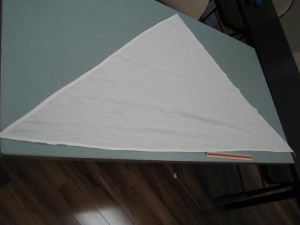Shoulder separation, also known as shoulder A-C separation, is a condition which involves damage to the acromioclavicular ligament. The ligament connects the acromion of the scapula to the clavicle and holds them together. When a direct force is applied to a person’s shoulder, he may suffer from a shoulder separation. Common causes of shoulder separation include falls, accidents and sports injuries.
A person with shoulder separation may experience shoulder pain, swelling, tenderness and bruising of the shoulder. Some cases may also exhibit a deformed shoulder, thus, requiring immediate medical attention.
If you report your injury to the emergency room, the doctor may prescribe rest, cold compresses, a sling, non-steroidal anti-inflammatory pain medication, narcotic pain medication and physical therapy. In case of a severe or complicated shoulder separation, surgery may be required to repair the damage.
Important Disclaimer: the material posted on this page on shoulder separation is for learning purposes only. To learn to recognize and help victims with shoulder separations enrol in St Mark James first aid courses.
Causes
Shoulder injuries such as shoulder separation are often caused due to a direct blow to a shoulder usually from falling onto one’s shoulder.
Causes of shoulder separation:
- Sports injuries – football, hockey, rugby
- Auto-mobile accidents
- Motor vehicle
- Occupational injuries
- Falls
Signs and symptoms
Signs and symptoms of shoulder separation include:
- Shoulder pain
- Shoulder pain worsens with movement
- Bruises to the shoulder
- Swelling of the shoulder
- Tenderness of the shoulder
- Shoulder stiffness
- Shoulder seems deformed
- Arm pain – shoulder pain travels to the arm
Treatment
Call 911 immediately or take the casualty to the hospital emergency room as soon as possible.
Follow these treatment steps until help arrives:
1. Immobilize the casualty’s shoulder
- Position the forearm perpendicular to the chest
- Place a sling on the casualty’s shoulder and tie it around his neck
Triangle bandages, found in most first aid kits, are effective tools for creating slings. - You can bind the arm to the body using a towel to wrap around the arm and chest and tie is under the other arm
2. Control symptoms
- Apply an ice pack for 20 minutes to reduce pain and swelling. Remove the ice pack to allow the skin to warm and reapply
- Give non-steroidal anti-inflammatory medication such as acetaminophen or ibuprofen to reduce pain and swelling
Seek immediate medical help if symptoms do not go away within 2 to 3 days
Warning signs
Notify your doctor if any of the symptoms occur:
- Unilateral numbness of the arm
- Unilateral weakness of the arm
- Swelling of the arm
- Worsening pain in the shoulder
- Worsening shoulder swelling
- Worsening tenderness of the shoulder
- Difficulty moving the shoulder
- Inability move the shoulder
- Skin redness of the arm and arm pain
- Shoulder seems deformed
Complications
Complications associated with shoulder separation include:
- Deformed shoulder
- Decreased range of motion or inability to move the shoulder
- Adhesive capsulitis
- Osteoarthritis if the A-C joint of the shoulder
Learn More
To learn more about creating slings and managing victims with dislocated shoulder sign up for first aid courses (sign up here) with a credible St Mark James provider.


